Published Feb 6, 2023
The Ballad of Lon Suder | Star Trek Tackles Mental Illness
The one-off Star Trek: Voyager character's appearance gave this fan a someone they could relate to.
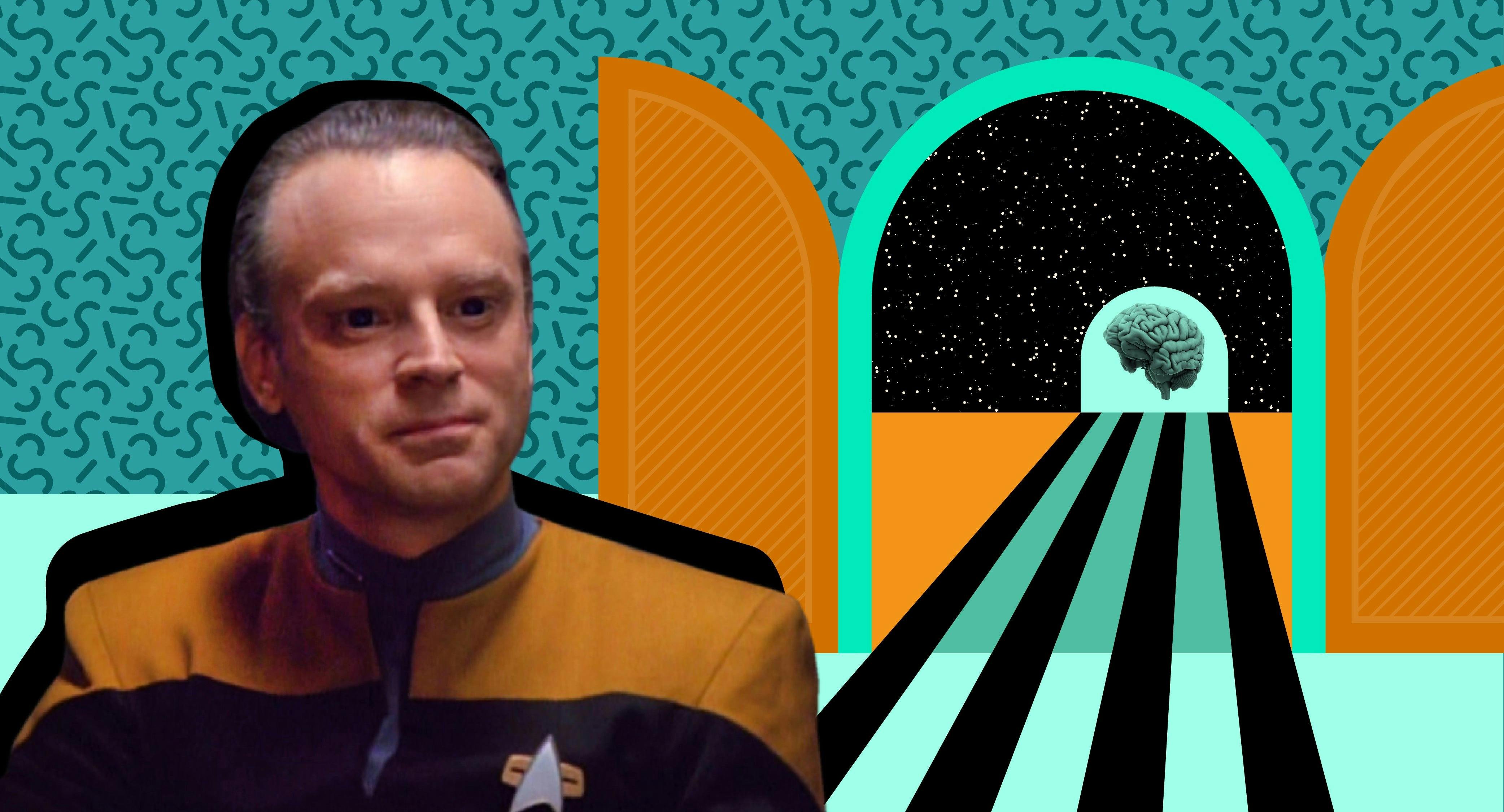
StarTrek.com
CONTENT WARNING: Discussion of mental and/or behavioral disorders and violent ideations to follow.
One of the hardest things a Vulcan might ever cope with is emotions. They are conditioned to suppress their feelings so that they can focus on the logic of every scenario.
As oneStar Trek: Voyager character aptly said to Commander Tuvok, “It must be difficult for you, knowing violence as I know it.”

StarTrek.com
That character was Lon Suder, a Betazoid Maquis who eagerly helped the human-led rebellion eliminate Cardassians. However, Suder had a secret — he wasn’t there to free anyone. He joined the Maquis because he had a brain imbalance that cut off his empathic abilities and gave him violent, difficult-to-control impulses. All his life, he tried to self-medicate with hologram programs and synaptic therapy, but none of them worked. With no one to help him, he settled on joining the Maquis, where his violence could be an acceptable tool.
Once he joined Voyager, though, where things were back to Starfleet regulations, Suder struggled to keep his impulses in check. He suppressed them for an entire year and a half before he broke and, in the episode “Meld,” ended up killing a fellow shipmate. Suder, Tuvok, and the Voyager crew spent the rest of the episode coping with the repercussions.
And he is the character I identify most with in all of Star Trek.
Episode Preview: Meld
Suder’s diagnosis was always left vague. Though Suder’s actor, Brad Dourif, described his condition as sociopathy (which from this point on, I will be describing as the more professionally defined Antisocial Personality Disorder, ASPD), I believe the situation is a little more complex. Instead of ASPD, I’ve always read Suder as living with bipolar disorder.
Bipolar disorder is characterized by mood swing episodes that range from depressive lows to manic highs. The disorder is further complicated by intrusive thoughts and impulses that feed the depression and mania. This disorder affects approximately 2.3 million Americans (1% of the population) and usually begins in adolescence or early adulthood.
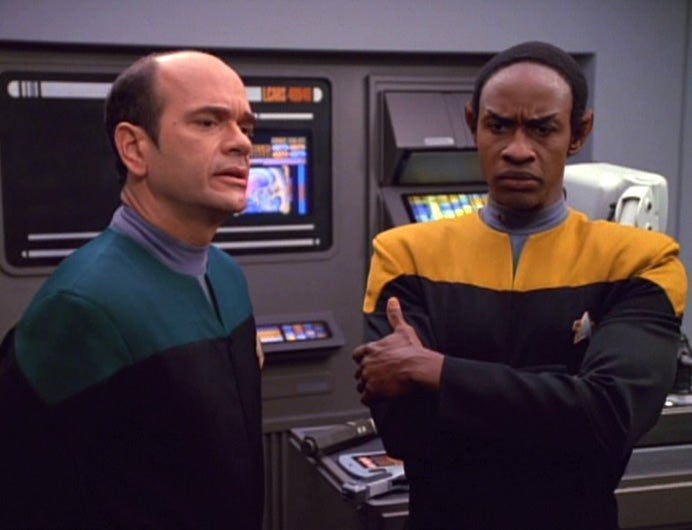
StarTrek.com
While the Doctor and Tuvok never clearly define what Suder has in the episode, and even deliberately say he doesn’t have bipolar disorder, there is a lot of evidence to the contrary. The oscillating impulses, his disregard for his own life, and the clear unfathomable depths of his rage speak to something different.
Because, despite Suder describing a lack of emotion and the writers implying ASPD, he does feel remorse and rage and self-hatred. People with ASPD are described as manipulative, callous, risk-taking, and charming. Suder was a man who hid away, kept to himself, all in an attempt to stave off his own impulses. He did not have a grandiose self-worth, criminal versatility, poor behavioral control, or a failure to accept responsibility. Many of ASPD’s most important indicators don’t exist in Suder. All he had was a self-described lack of empathy. Furthermore, he took complete responsibility for himself and wanted to rid the world of a “monster” just as much as they did.
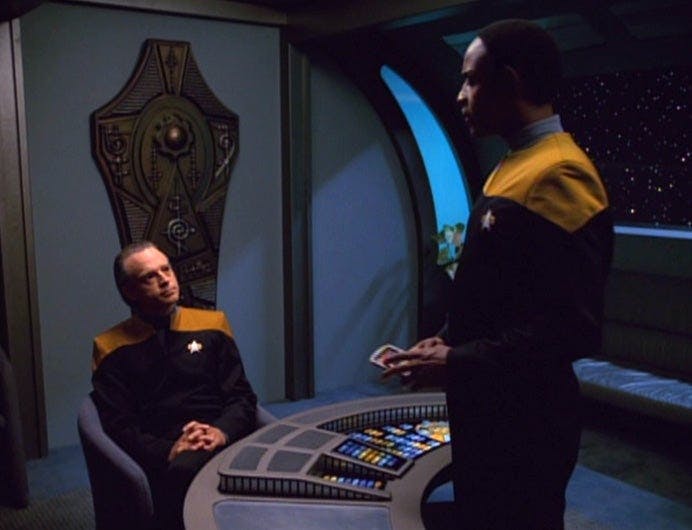
StarTrek.com
Now, let’s apply his behaviors to bipolar disorder. Much like bipolar disorder symptoms, Suder was bombarded by complex moods and impulses. For example, he liked to bury his feelings and insist they didn’t exist, but when he killed the other ensign, he said at first it was “just because he didn’t like how he looked at him.” But as Tuvok pried, Suder got slightly more agitated and upset, clearly trying to keep those parts of him he didn’t like at bay. He eventually admitted the ensign looked at him like everyone else does, like he is a monster. And Suder himself agreed with that assessment. He was a monster, and he was more than willing to die for his crimes.
That’s not a self-important, manipulative man who doesn’t care about others. That’s someone who thinks he’s the scum of the earth and everyone would be better off without him; he was just trying to hold it in. And now he doesn’t feel like he has any right to keep trying anymore.
While this is a fictional character, I do think there is a serious case for Suder having more in common with bipolar disorder than ASPD. But, either way, he was a rare case of representation on screen for any severe mental disorder, and the way the show approached Suder’s illness matters more than the average person will ever know.

StarTrek.com
While Lon Suder is an extreme, uniquely violent example (which can be problematic in itself), the way that Voyager treated Suder was also uniquely humanizing. At first, Tuvok felt the captain’s choice of confining Suder to his quarters was too kind. But, in his efforts to support her decision, he melded with Suder and got a real taste of who he was. He felt the anger, the seething, incessant thoughts, and the self-loathing.
The episode proved how oppressive Suder’s disorder was by sharing his thoughts and emotions with Tuvok. Even against the most level-headed of minds, those violent impulses and intrusive thoughts were aggressive and unrelenting.
The only thing that shook Tuvok out of it was Suder’s own experienced self-reflection on the disorder in their brains. In one of Voyager’s most powerful scenes, Suder explained that Tuvok killing him wasn’t really justice. The mental gymnastics going through Tuvok’s mind didn’t change the nature of what he was doing. This violence towards others was a form of self-harm. Tuvok felt like he and Suder were these twisted monsters and he was trying to kill them both.
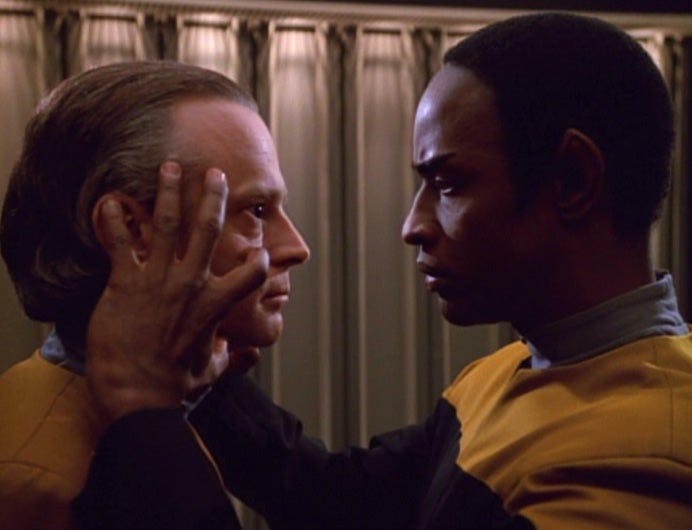
StarTrek.com
It was only when Tuvok gave into that truth of his emotions and stopped fighting that Suder was able to call for help and save them both.
Once he experienced Suder’s suffering and Suder saved his life, Tuvok became his loudest advocate. To Tuvok, Suder went from a hardened criminal on death row to a man trapped in an unbalanced mind that he couldn’t control. Afterwards, The Doctor and Tuvok fought for rehabilitation and management instead of ending Suder’s life.

StarTrek.com
With time, the Doctor and Tuvok helped Suder find balance and peace with medication, meditation, and self-soothing hobbies. Suder started growing plants to help the aeroponics bay and was making a lot of therapeutic progress with Tuvok. Tuvok even wanted to give him more freedoms, proving how far he’d come along in roughly less than six months. Getting that kind of support finally gave Suder the agency to become a well-rounded person for the first time in his life. That is, until his untimely death.
Even though Voyager only knew the real Suder for a short time, he grew from a violent, unstable person who couldn’t handle the screaming in his head into someone trying to get healthier and contributing to his community. That doesn’t excuse murder, but it does speak to the person behind the disorder.
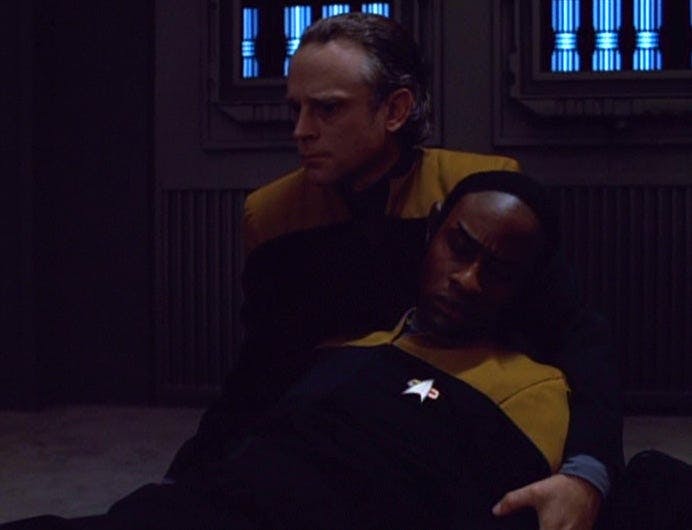
StarTrek.com
While Suder deserved to be saved before it ever came to murder, it was revolutionary for the series to insist upon his worth and his potential even after he did such a horrible thing. That kind of complex narrative isn’t what you normally see for someone who has anything looking like bipolar disorder, or ASPD, especially not in science fiction.
For comparison, in 2019 films, two different bipolar characters killed family members and themselves (Midsommar, The Goldfinch) and the vaguely mentally ill Joker murdered multiple people and incited a violent, city-wide anarchy movement. Drama series have gotten better about mental disorders, but sci-fi/horror tend to act like its proof of villainy. And don’t even get me started on how many disabled villains are used in Shyamalan films.

StarTrek.com
That hard truth makes Voyager’s portrayal all the more impressive. Let’s say it plainly — Not only did the series not turn Suder into a cheap and easy monster, but they also showed how overwhelming the effects of his disorder can be. And they did it brilliantly, by loaning it to a well-understood, well-balanced, beloved character. Though his death was premature, Voyager ended his story by letting Suder improve and become a savior. Voyager went above and beyond to prove there was a person underneath the unchecked darkness that plagued him. That the illness was a chemical imbalance, a bundle of neurons, and not a personal, damning flaw of Suder’s own fault.
After all, the episode does imply that if Suder hadn’t been afraid to get help, and had been helped, he might have never hurt anyone.
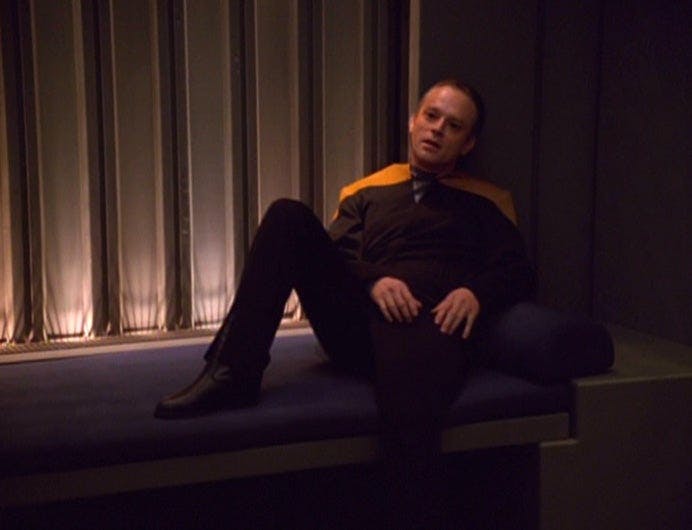
StarTrek.com
Now, Lon Suder is still a bit of a problematic figure. Voyager did take his disorder and experiences to the extremes, turning an unbalanced man into a murderer. And they also, though several episodes later, still managed to turn him into a martyr. Neither of those things are redeemable. People with intense psychiatric disorders like bipolar disorder deserve stories where they don’t have to be a criminal or a killer to be noticed. After all, only a rate of roughly 8.4% of patients with bipolar disorder have committed a violent crime after diagnosis. That means, going by that statistic and the number of bipolar people in America, over 2 million members of the community have never had a history of violence. Even then, most all of those committing crimes were ones who struggled with the disorder and substance abuse. And yet, even though the vast majority of bipolar people don’t commit crimes, it is that loud minority that the greater society has used to damn us.
Lon Suder lives in a rare in-between; a space where he was a criminal and person who needed help and patience. It was something I’ve never seen before. And it was something I absolutely needed, when I watched it as a struggling young adult coping with my own disorders.
I was diagnosed with bipolar disorder in 2013, when I was 17. And even then, I didn’t get a decent handle on it until I was 22. That same year, I was struggling with my transition from a miraculous college grad, to a lost writer cleaning my house too much because my boyfriend had his life together and I felt like a mess.

StarTrek.com
I figured binging Voyager while trying to scrub my pain away wouldn't be a bad idea. Star Trek had always been proverbial comfort food for my little nerd heart. I threw it on, got to folding laundry, and didn’t give a second thought to (what I thought was) a typical 50-minute, sci-fi crime story.
I stopped cleaning the second Suder and Tuvok talked for the first time about their meld. Suder said, “It’s like I can observe the violence within me without letting it get too close.” That’s almost exactly what I thought after my first month on stabilizer meds. I put my towels down. All I could do was stare, unblinking, at this man who all of a sudden looked so much like me. The first man on TV I’d ever seen who looked like me. I hadn’t joined a rebellion to sate my impulses, but I tried to run away from home to spare my family my suicidal ideations. I didn’t kill a man, but I did barely sleep for a month and told someone I was willing to die for my writing.
Going in, I thought I didn’t like looking at Suder. But seeing Tuvok glare at him, I saw every face that suddenly saw me as a stranger when I disclosed my disorder. I felt Suder’s words echo against my ribcage — and he was right. I certainly didn’t like the way he looked at me.
“You’re right; it is disturbing. Never knowing when that impulse may come. Or whether or not you can control it when it does. You live on the edge of every moment," Suder described, talking about his disorder.
And there I was, on the edge of my couch, and he was right.

StarTrek.com
By the end of the episode, after seeing his struggle, the person it made him, and the person he wanted to be, I was sobbing, horrified, and relieved all at once. Lon Suder was more violent, more dangerous, but still just a person who needed help with the things in his brain he struggled to control.
That mattered more to me at that moment than any of the rejection letters in my inbox or the projects I wasn’t sure I was getting right. In a fictional, utopian future out there, someone looked like me and Starfleet, the moral arbiters of the galaxy, wanted him to get better.
I only wish they gave him more time to enjoy the stability he always deserved. Many stories like to show the monsters or the inspirational heroes of mental illness. Suder wasn’t that. He wasn’t only pitiful or unforgivable or full of lost potential. In his short time on Voyager, Lon Suder got to be the rarest thing someone with a mental disorder on-screen gets to be — a person.
This article was originally published on November 16, 2020.
Stephanie Roehler (they/she/he) is a freelancer who loves to write about video games, books, movies, TV shows, comics, and especially Star Trek.
Stay tuned to StarTrek.com for more details! And be sure to follow @StarTrek on Facebook, Twitter, and Instagram.

